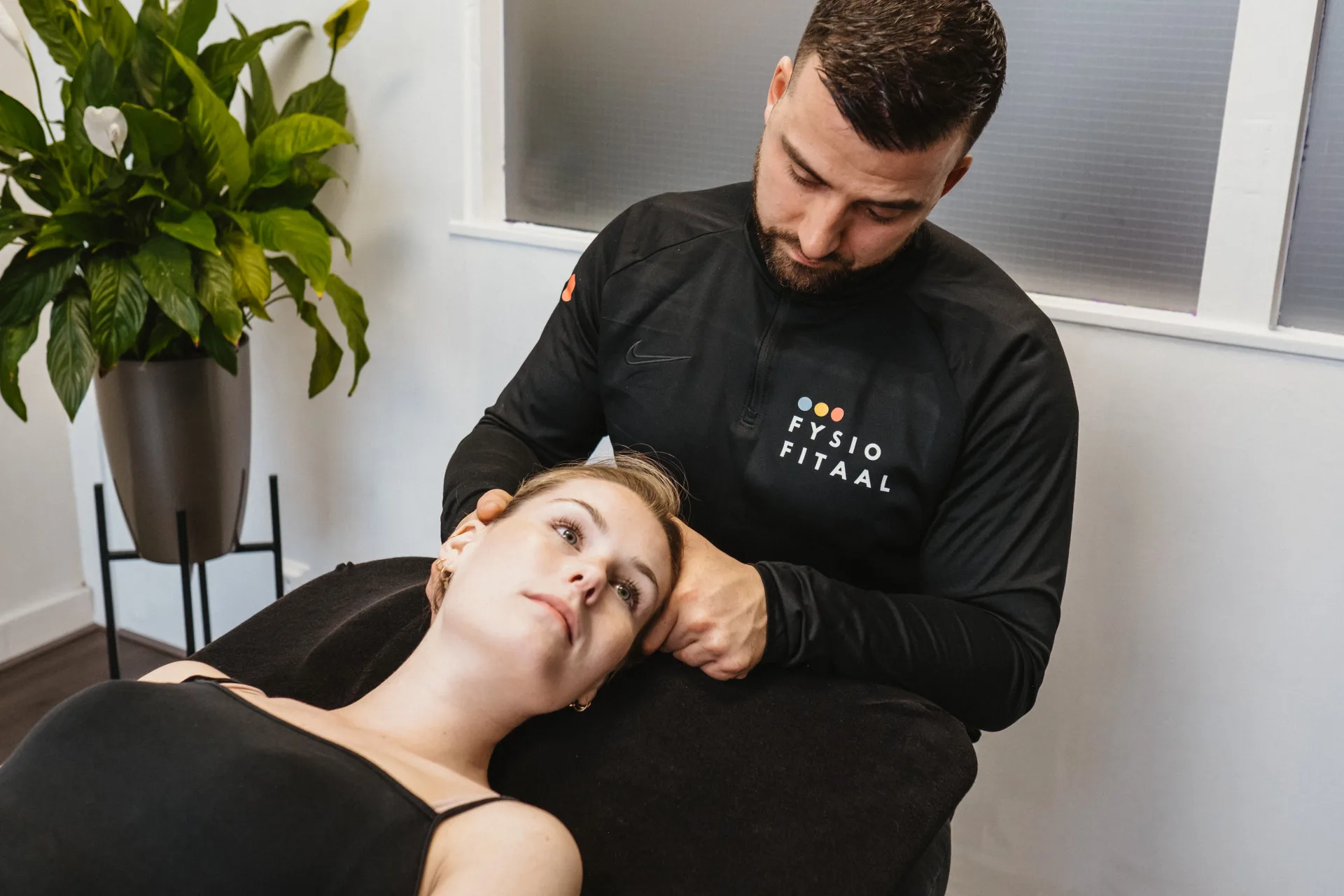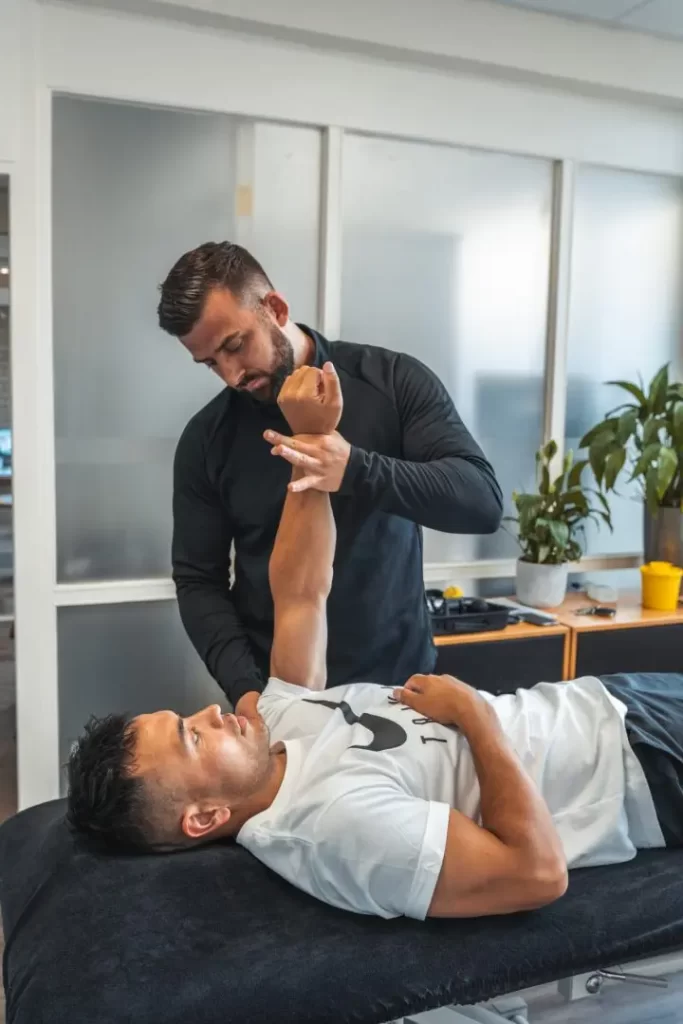Neck pain
Neck pain can come on suddenly or slowly. Sometimes you may notice that certain movements such as looking back no longer go well or are even impossible for a while. The pain is often nagging and worsens with movement or a certain posture. Sometimes the pain radiates to the entire arm or even the hand. But the radiation may also consist of tingling of the arm and a dull feeling of the hand. Headaches may also occur as a result of neck pain.

Cause
The vast majority of neck pain has no obvious cause. This does not mean that there is nothing to treat but the reason for the pain cannot be pinpointed via an X-ray or MRI, for example. The cause of these neck pains is often in the muscles or joints.
Osteoarthritis symptoms of the neck become more common as we age. In particular, we see that the intervertebral discs show signs of ageing. Possibly, this leads to complaints.
Sometimes a neck hernia is the cause of the symptoms. Often these complaints also go away with the help of physiotherapy. A neck hernia involves pressure on the nerve running from the neck to the arm. Generally, the symptoms in the arm are more prominent than the neck pain itself. So you have more pain in your arm than pain in the neck. This often involves a sharp clear pain running into the arm.
Osteoarthritis symptoms in the neck become more common as we age. In particular, we see that the intervertebral discs show signs of ageing. Osteoarthritis of the spinal canal is also possible. We call this a dan stenosis. Osteoarthritis is not always a reason for pain in the neck. But when the symptoms match the image on an X-ray, the cause of the pain may well be osteoarthritis in the neck.
Common Neck pain

Cervical radiculopathy neck pain (with radiation)
In a cervical radiculopathy, there is pressure on a nerve root in the neck

Risk factors
Risk factors
Gradations of muscle injury
Gradations of muscle injury
The different types
The different types
Anatomy of the neck
The neck spine consists of several muscles, nerves and joints. The neck spine consists of 7 vertebrae. These vertebrae are often abbreviated as C1 to C7. When we look at the neck, we see a natural curvature. The joints in the neck are called facet joints. The facet joints in the neck allow you to bend, stretch and twist in the neck. Between all these vertebrae are intervertebral discs. Intervertebral discs are of a softer structure and their function is to allow the vertebrae to move smoothly among themselves. Besides movement, the intervertebral disc also plays an important role in the stability and shock absorption of in the neck. There are many muscles in the neck. The function of these muscles is to move and stabilise the spine during movements. There are muscles that run from vertebra to vertebra but also muscles that run across the entire spine. Anatomically, a distinction is made between a local muscle system and a global muscle system. Nerves run from the various vertebrae into the arm from the neck. Nerves have a controlling function towards the muscles in the arm. This is where stimuli from the brain go to the muscles. This makes movement possible. In addition, they also have a sensory function. This means that information such as pain, temperature, pressure and movement stimuli go from the arm to the brain.
Different phases
Different phases
Physiotherapy and neck pain
During the examination, the possible factors contributing to your neck pain are examined. Based on the examination and interview, a clear treatment plan is drawn up. Keep moving is very important to maintain the mobility in your neck. We find it very important that you understand how the symptoms arise and what you can take into account to recover as quickly as possible! Besides specific advice, treatment can include increasing the mobility of the neck through manual therapy, various muscle techniques and training the muscles through exercise therapy and physical training.
Making an appointment at FysioFitaal
We work from multiple locations in Tilburg, always close by for professional and accessible physiotherapy. Fill in the contact form and we will contact you soon. Together, we will work on your recovery!

